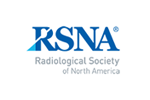Sinonasal Disease
Sinonasal disease includes rhinosinusitis (inflammation of the nose or sinuses). “Acute” means that symptoms last less than 4 weeks, and “chronic” means that symptoms last more than 12 weeks.
For acute rhinosinusitis alone, no imaging tests are recommended.
For acute rhinosinusitis with possible orbit (eye) or brain involvement, head MRI or orbits, face, and neck MRI without and with contrast or maxillofacial CT with contrast is usually appropriate. Head MRI without contrast or head CT with contrast may be appropriate.
For people who may be candidates for surgery, maxillofacial CT without contrast is usually appropriate. Orbits, face, and neck MRI or CT of the sinuses without contrast or maxillofacial CT with contrast may be appropriate.
For acute sinusitis that quickly gets worse or fungal sinusitis that may be spreading, orbits, face, and neck MRI without and with contrast, maxillofacial CT with contrast, or maxillofacial CT without contrast is usually appropriate. Head MRI without and with contrast, head MRI, or orbits, face, and neck MRI without contrast or head CT with contrast may be appropriate.
For possible sinonasal mass, orbits, face, and neck MRI without and with contrast, maxillofacial CT with contrast, or maxillofacial CT without contrast is usually appropriate. Head MRI without and with contrast, head MRI, or orbits, face, and neck MRI without contrast or head CT with contrast may be appropriate.
For possible leaking of fluid surrounding the brain and spinal cord, maxillofacial CT without contrast is usually appropriate. Head MRI or orbits, face, and neck MRI without contrast; head CT cisternography or DTPA cisternography; or sinus single-photon emission computed tomography or single-photon emission computed tomography/CT may be appropriate. These tests determine whether there is fluid in the sinuses.
This page was reviewed on July 25, 2022



